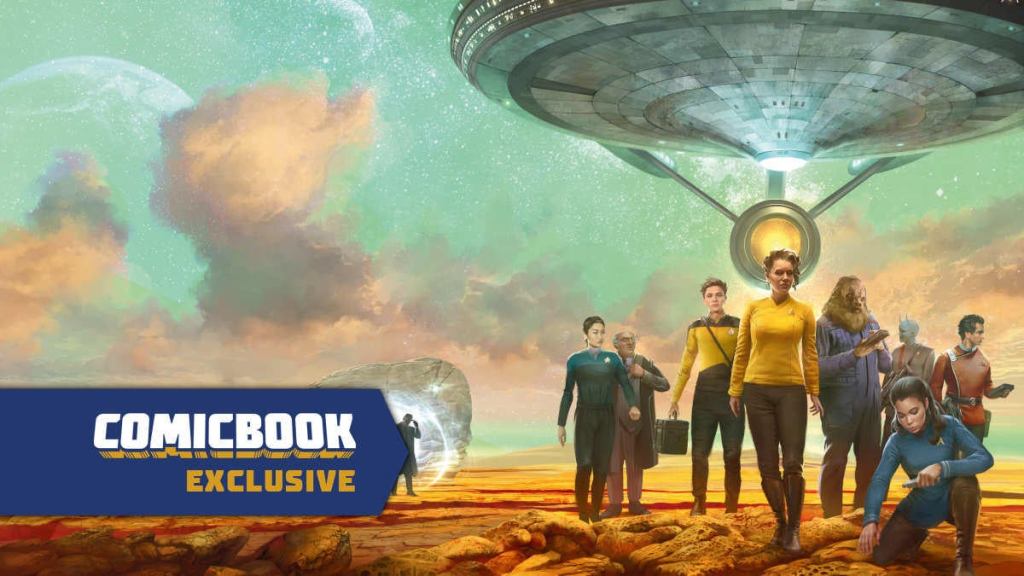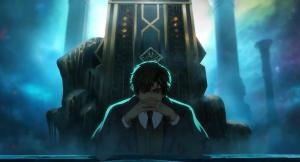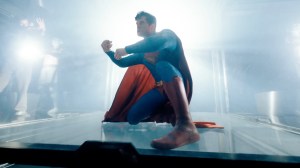Star Trek Adventures Second Edition will debut later this year, and publisher Modiphius Entertainment has provided ComicBook.com exclusive details on some of the coming changes with the revised game rules. The new information arrives on the same day that Modiphius will release its new Star Trek Adventures Second Edition Quickstart Guide, offering players their first chance to embark on a mission using the updated Star Trek Adventures Second Edition rules. A first look posted on Modiphius’ company blog earlier this month revealed some of the upcoming changes in Star Trek Adventures Second Edition, and ComicBook.com can now provide more details and context as to how those changes will impact the game.
Videos by ComicBook.com
One of the biggest changes revealed in the Star Trek Adventures Second Edition first look is that Modiphius has eliminated challenge dice from the game. That means that Star Trek Adventures, based on the d20 system, will use only 20-sided dice in its updated rules. This has several ramifications for how Star Trek Adventures is played:

Extended Tasks in Star Trek Adventures Second Edition
Succeeding at a task will mark off a set number of spaces on the progress track. This number is called Impact and is usually equal to the department used for the task. For example, succeeding an engineering task with an Engineering rating of 4 results in an Impact of 4, though complications, Momentum, and Resistance may alter that number.
Once players have filed the progress track, the extended task is complete. Some extended tasks have breakthroughs that trigger new events or circumstances.
Ship Combat in Star Trek Adventures Second Edition
In Star Trek Adventures Second Edition, the shields of starships work similarly to extended tasks. Shields use the progress track. Ship-to-ship weapons can deal damage to shields based on Impact. When a ship attacks, subtract the target’s Resistance from the weapon’s damage, and then reduce the target’s Shields by the difference. Shields are breached if the progress track reaches zero.
There’s also the possibility that a ship will become shaken. A shaken ship will suffer additional effects from damage as its shields weaken, like how breakthroughs work in extended tasks.
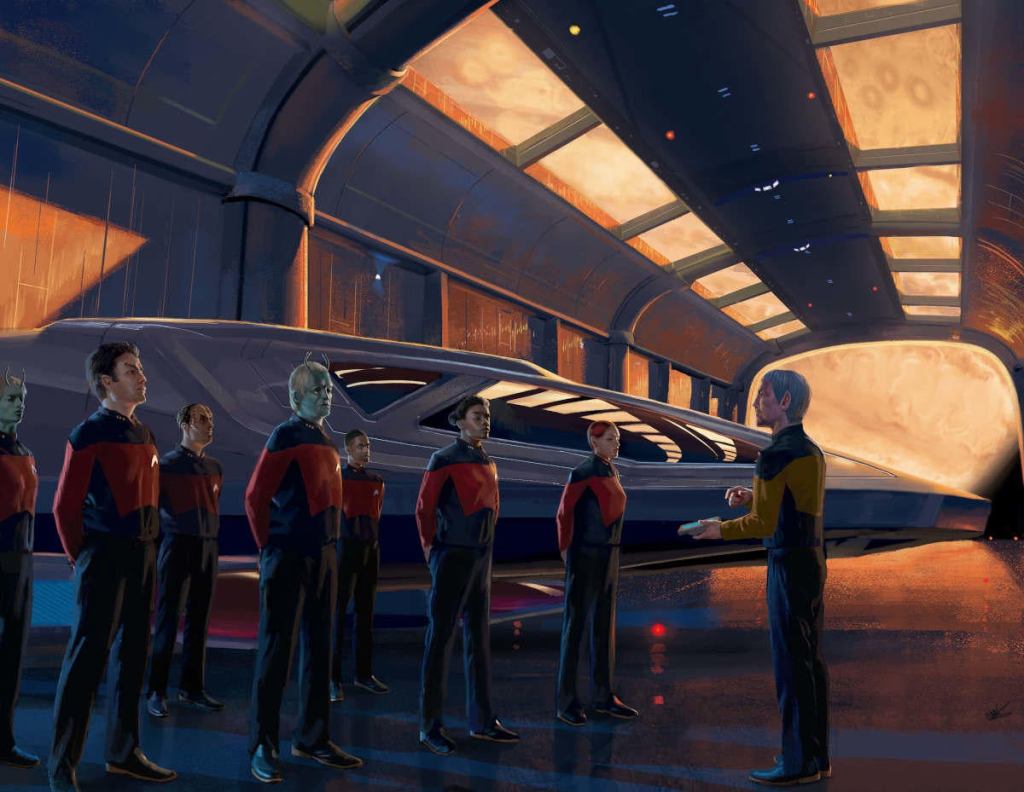
Personal Combat in Star Trek Adventures Second Edition
Dropping challenge dice from Star Trek Adventures Second Edition also changes how personal combat works. Attacks and hazards will inflict Injuries, eventually leading to a character being Defeated, or unable to continue participating in a scene. However, characters can suffer Stress to avoid Injury (while NPCs spend Threat). If a character takes too much Stress, they become Fatigued but can still act, albeit while suffering a penalty.
Characters can recover from Stress by using Momentum, receiving aid from allies, with time to rest. Characters who work too hard might find themselves being ordered to rest. That might mean spending time with friends, or begrudgingly obeying orders from the ship’s doctor, depending on the character.
Starships in Star Trek Adventures Second Edition
Star Trek Adventures Second Edition introduces refined Starship mechanics. Modiphius has three goals in mind:
- Better guidance for out-of-combat use such as being the setting of an adventure or for assistance in a task.
- Refined starship combat, including ensuring that those not at the helm or the tactical console can participate meaningfully.
- Reduced resource tracking, focusing on Momentum, Determination, and Threat.
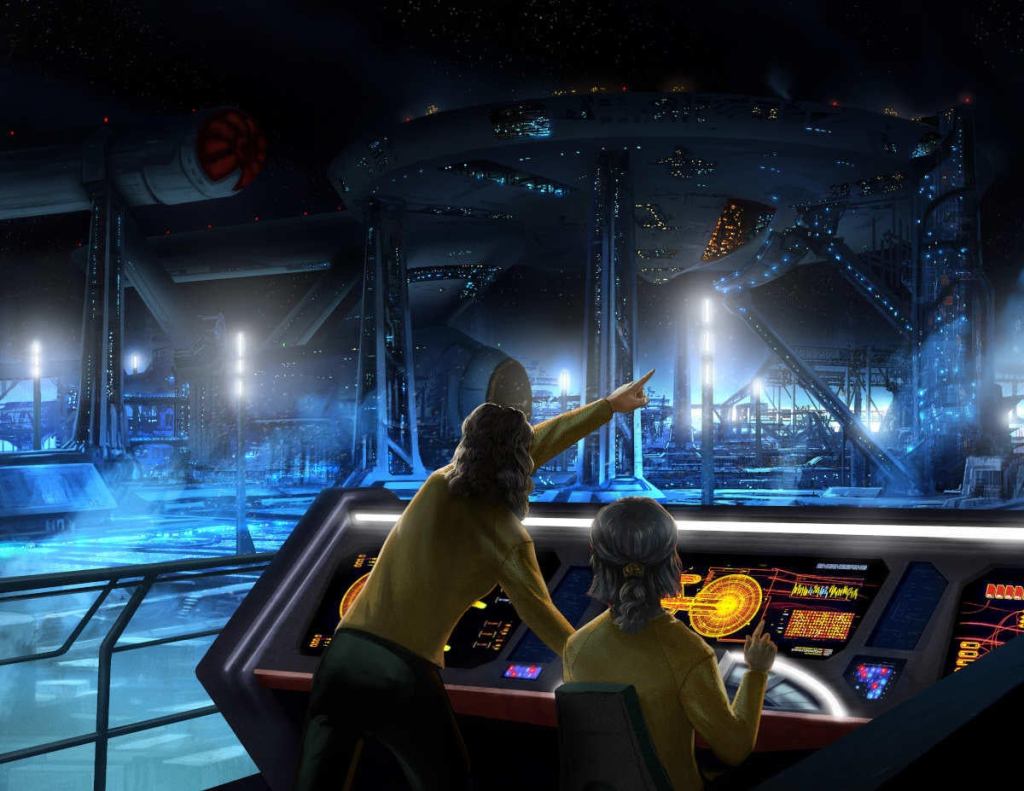
A ship’s Reserve Power is an extra energy reserve that exists after all essential systems have been accounted for. Rather than working as a pool of points to be spent on extra Momentum, as in Star Trek Adventures First Edition, Reserve Power in Star Trek Adventure Second Edition is something players either have or don’t. In each scene, a ship gains the use of Reserve Power, which can be used in a few ways:
- Reroute Power allows players to direct power to a specific system, such as Structure, Weapons, or Engines. If a task is attempted using one of those systems to assist, the assist die counts as a 1. However, if the task generates a complication, two complications are created instead of one.
- Powered actions are actions that can only be taken when using Reserve Power. These actions include going to warp speed or regenerating shields during combat.
Once Reserve Power has been used in a scene, it can’t be used again unless an engineer succeeds at Regain Power. Of course, a ship may lose Reserve Power by other means, such as battle damage, so it may be best for players to use it while they have it.
When does Star Trek Adventures Second Edition release?
The new Star Trek Adventures Second Edition Core Rulebook will debut at Gen Con. A new Star Trek Adventure Second Edition Starter Set will follow in the fall. The core rulebook includes rules for players to create original characters and starships, will be compatible with supplements and expansions previously released for Star Trek Adventures‘ first edition, and will feature artwork inspired by the look of Star Trek: Strange New Worlds.
Gen Con 2024 kicks off on August 1st. Look for the Star Trek Adventures Second Edition Core Rulebook there, and for the Star Trek Adventures Second Edition Starter Set to follow in the fall.

